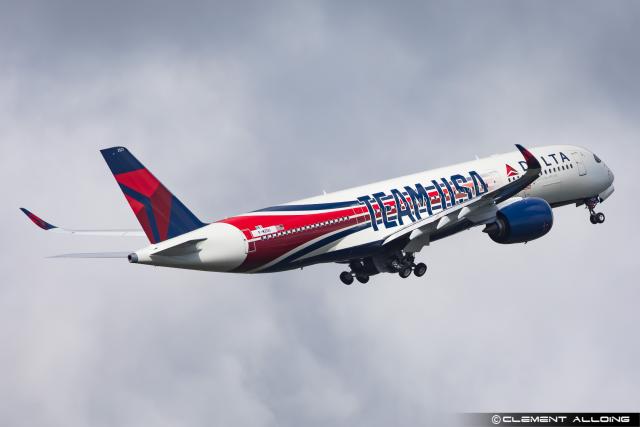Accident: Asiana A321 at Osaka on Oct 28th 2009, tail strike on landing
| By Simon Hradecky, created Sunday, Mar 27th 2011 12:59Z, last updated Sunday, Mar 27th 2011 12:59Z The Japanese Transportation Safety Board (JTSB) released their final report in Japanese concluding the probable cause was: inadequate flare by the first officer causing the pitch angle to become excessive at ground contact and the tail to contact the runway. Due to the inadequate flare the airplane bounced, the first officer however continued his nose up control inputs until second ground contact. The first officer (35, CPL, 1789 hours total, 1498 on type) was pilot flying, the captain (41, ATPL, 8022 hours total, 2079 hours on type) was pilot monitoring. The airplane had been cleared to land on Osaka's runway 06L. At 1000 feet AGL the first officer disconnected the autopilot, autothrust remained in speed hold with a target speed of 137 KIAS. The airplane reached 100 feet AGL at a sink rate of 736 feet/minute and a pitch angle of 2.1 degrees, which reduced to 1.8 degrees 2 seconds later. The airplane went through 33 feet AGL when the first officer began to apply back pressure on the side stick, the pitch angle started to increase, however 3 seconds after descending through 33 feet AGL both main gear sensors registered ground contact at a pitch angle of 4.6 degrees, a vertical speed of 544 feet/minute and a vertical acceleration of 1.91G, the spoilers began to deploy, and the vertical acceleration reduced to 0.67G. The first officer now applied 15.9 degrees (maximum 16 degrees) nose up input, the thrust levers were placed to idle and the engines spooled down. 2 seconds after first touchdown the airplane reached 4 feet AGL at a pitch angle of 10.2 degrees, the thrust levers are placed into the TOGA detent, a second later both gear switches register ground contact again at a pitch angle of 9.8 degrees, a vertical acceleration of 1.2G and a speed of 124 KIAS. 2 seconds later a first officer's nose up input of 15.1 degrees is recorded, the pitch angle reached 10.5 degrees, the first officer reduced the stick input to 1.4 degrees and the pitch angle began to decrease afterwards, the airspeed increased to 140 KIAS and the radar altimeter showed a gradual increase. 9 seconds after the throttle levers were placed into the TOGA detent the airplane reached 15 feet AGL and climbed out in the go-around. The airplane landed without further incident on runway 06L about 10 minutes later. The captain reported later, that the approach had been stable until about 20 feet AGL, when the first officer got behind the aircraft. The aircraft bounced once, the first officer selected TOGA, however the pitch attitude was around 11 degrees when the aircraft settled on the runway a second time. He had observed the first officer during two landings where the first officer did not raise any concerns. The first officer said, he started the flare at 30 feet AGL however in order to reduce the drift he then delayed the flare a bit. The first touchdown was hard, the airplane bounced. Fearing the second touch down might be even harder and alignment with the runway lost he decided to go-around and placed the throttle levers into TOGA. He did not realize they had suffered a tail strike on second touch down observing a pitch attitude of 9-10 degrees. He subsequently reduced the pitch to normal go-around attitudes. He considered this landing the worst of his about 400 landings during his career so far. He did not think fatigue was a factor. The flight attendants reported they noticed a very hard touchdown and saw the nose of the aircraft rise subsequently. A few seconds after the first impact they heard sounds as if the airplane was rubbing over the runway before the airplane began to climb out. The airplane received skin damage to the underside of its belly, frame damage and water drain mast damage. Apart from the paint and scratch marks on the runway no damage occurred at the airport. Airport surveillance cameras showed the airplane touched down about 150 meters past the runway threshold but lifted off again flying almost parallel to the runway with the attitude increasing before settling again on the runway about 360 meters past the runway threshold, white smoke was visible from the tail, subsequently the airplane began to climb out. The JTSB cited manuals stating that a tail strike occurs at pitch angles of 11 degrees with gear oleos decompressed or 9.5 degrees with gear oleos fully compressed. The manual warns of a pitch up tendency during ground spoiler extension. The JTSB analysed that the captain was not monitoring the first officer properly and failed to assume control of the aircraft when the flare became inproper. The skin damage (Photo: JTSB):  Runway marks (Photo: JTSB):  Graphical representation of FDR (Graphics: JTSB):  |


No comments:
Post a Comment